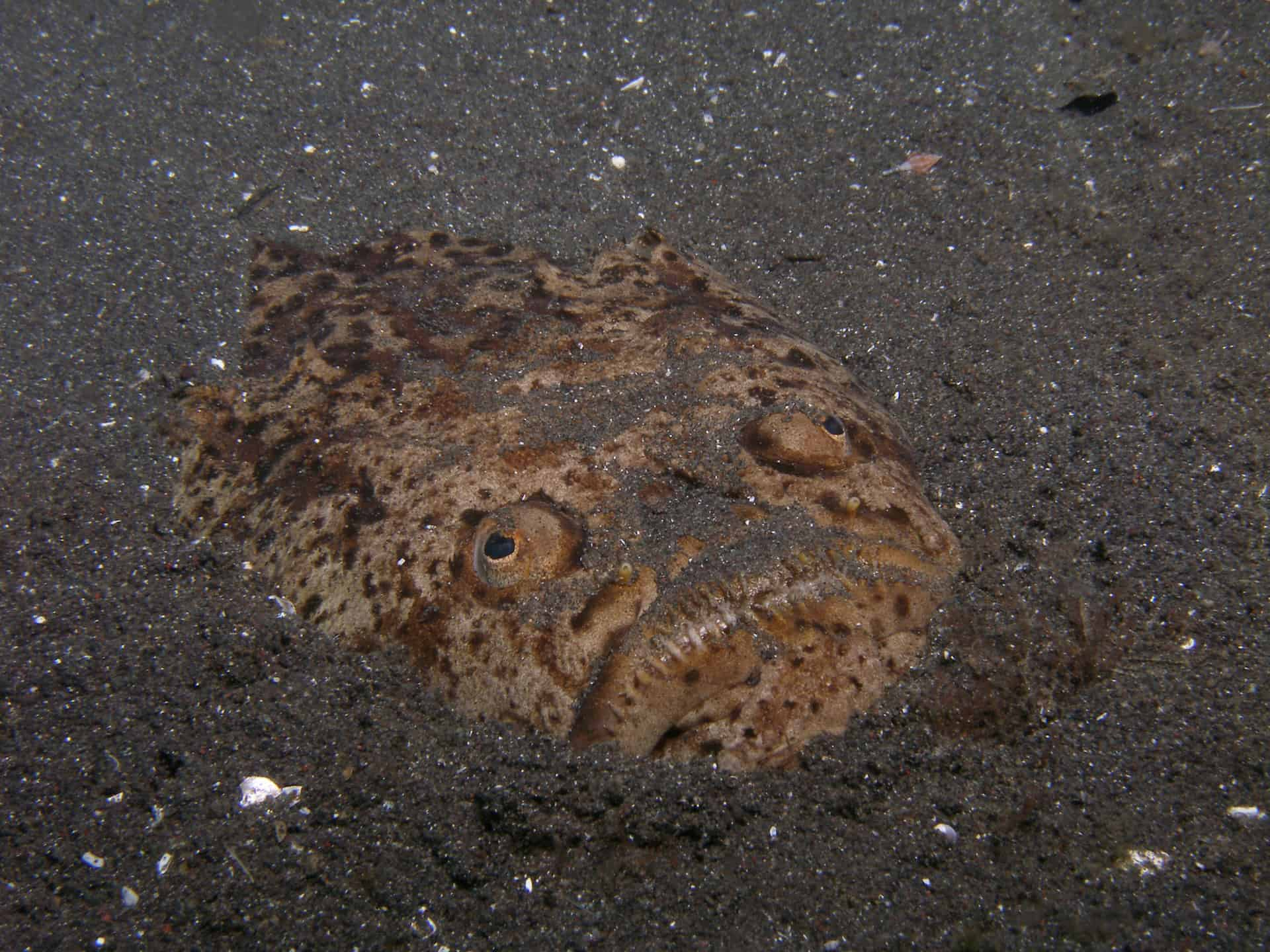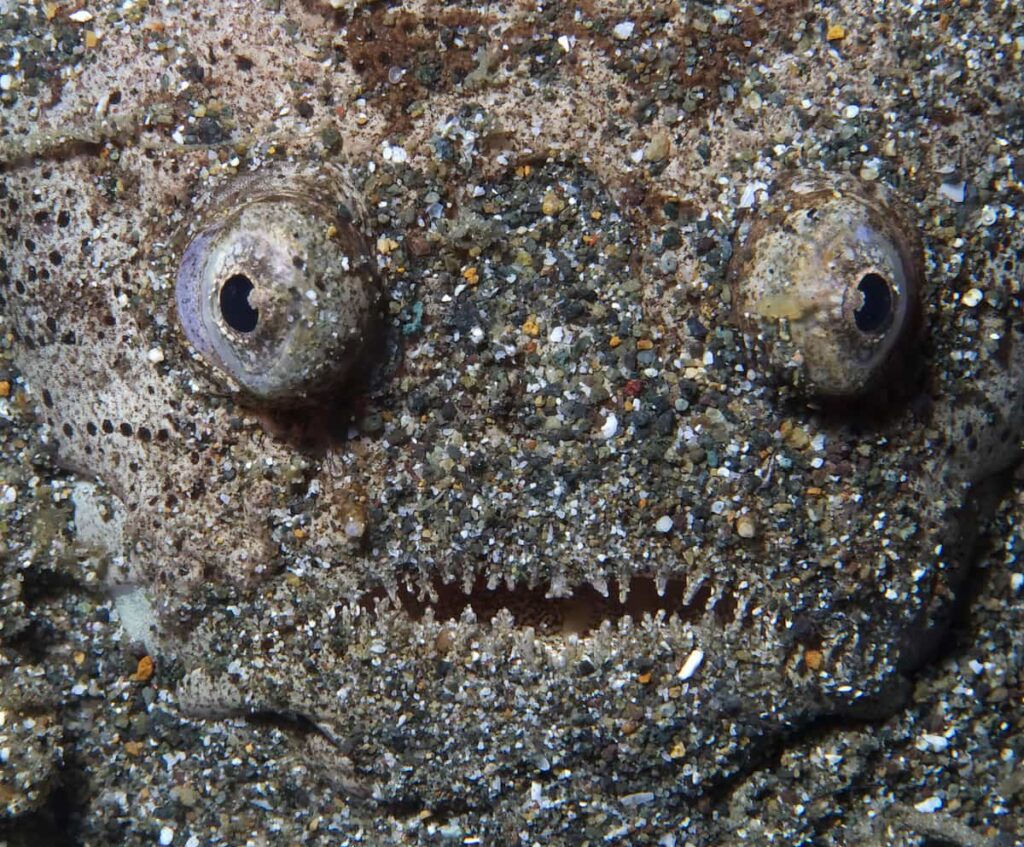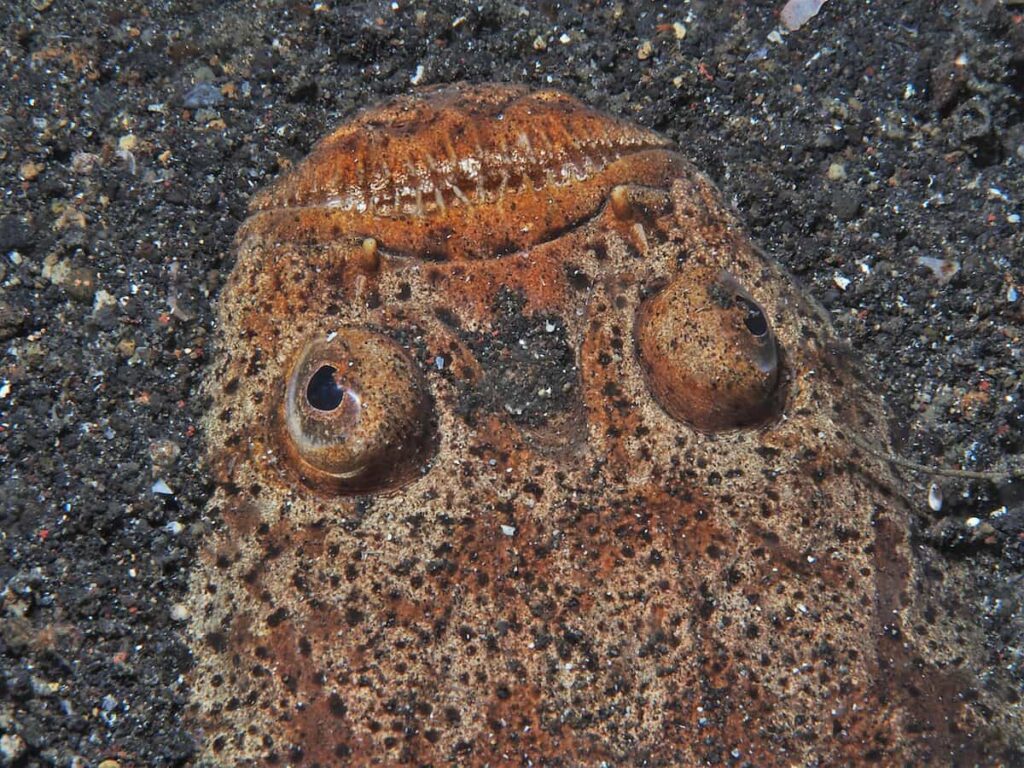What is a Stargazer?
Stargazers are bizarre (and awesome)

The ocean is full of beautiful fish—the stargazer simply isn’t one of them.
However, sometimes it’s the weird, wonderful, wacky fish that are the coolest, and the stargazer is no exception. Their wide, bugging eyes and perpetual frown will have you falling in love in no time.
Let’s dive in to learn more about the stargazer.
Get Ocean Updates in Your Inbox
Sign up with your email and never miss an update.
What are stargazers?
The name “stargazer” can refer to any of the 50 or so species of fish in the family Uranoscopidae. In the United States, folks are likely most familiar with those in genus Astroscopus, a group of bony fish found in the Atlantic and Pacific waters in the Western Hemisphere. There are four known species of Astroscopus—the Northern, Southern, Brazilian and Pacific stargazer. The largest of the group are the Northern stargazers, which are found in the Western Atlantic and can grow to two feet long.
How do stargazers get their name?
Uranoscopidae comes from the Greek words for “sky” and “to watch.” The name Astroscopus comes from the Greek word for “star” and the Latin word for “lookout”. Once you get a look at the stargazer, it totally makes sense: Their eyes sit on the top of their heads, pointing directly upwards towards the “stars.” This feature that inspired their name is also what makes these fish look so distinctive.

What do stargazers eat?
You can deduce how stargazers hunt by looking at their eyes. Having eyes on the top of their heads means they can bury themselves in the sand and use their eyes like little telescopes. They can stay perfectly hidden and wait for an unsuspecting fish or other prey to come by, then the stargazer will ambush their meal. Like other “sit-and-wait predators,” ambush predators like stargazers conserve energy by concealing themselves.
Are stargazers dangerous?
Stargazers have a few tricks up their sleeves (fins?) to protect themselves from harm. Some species are venomous and have two spines that can shoot unpleasant toxins into the flesh of a threatening animal. Other species have special organs behind their eyes that produce electric currents that can shock potential predators. A venomous, shocking and weird looking animal—what more could you ask for?

Here at Ocean Conservancy, we know that all animals deserve a healthy and clean ocean for their homes. Check out our Action Center to see how you can help protect our ocean so animals like stargazers can thrive.